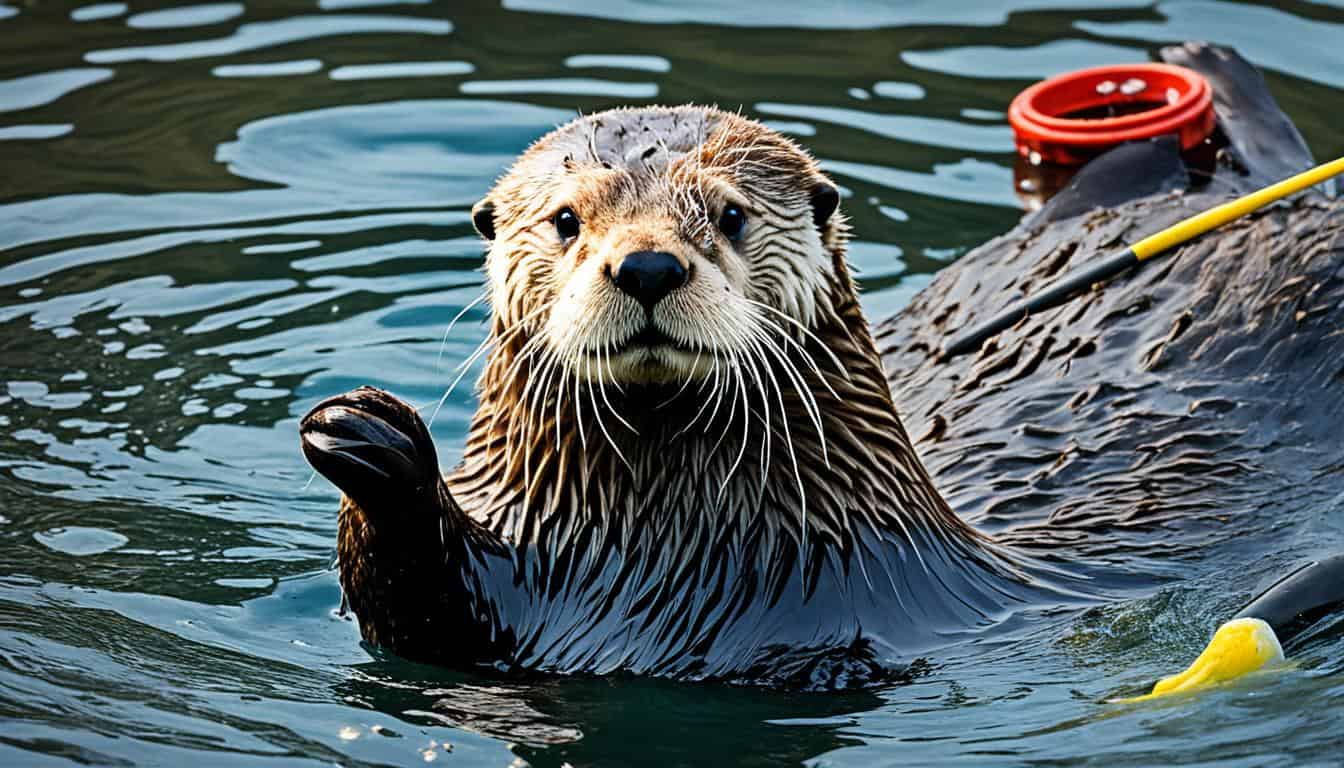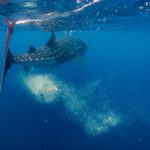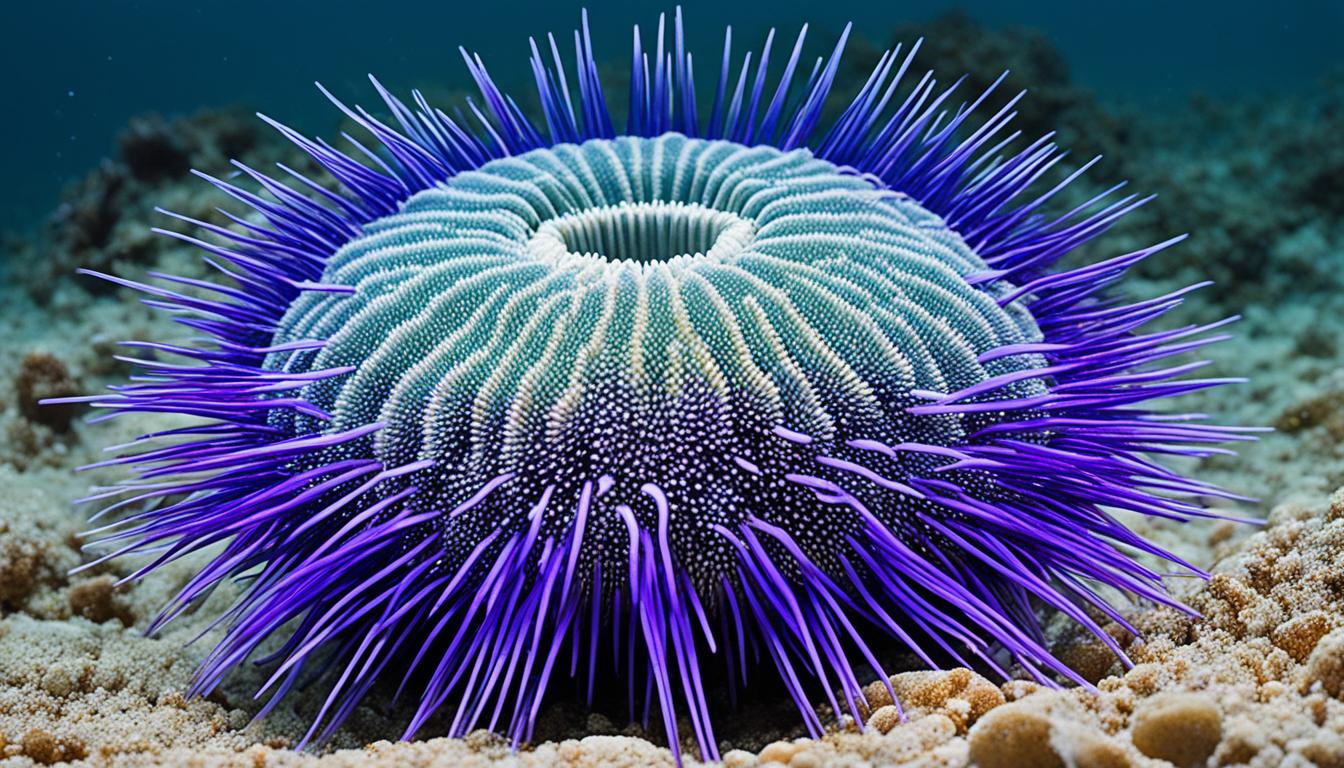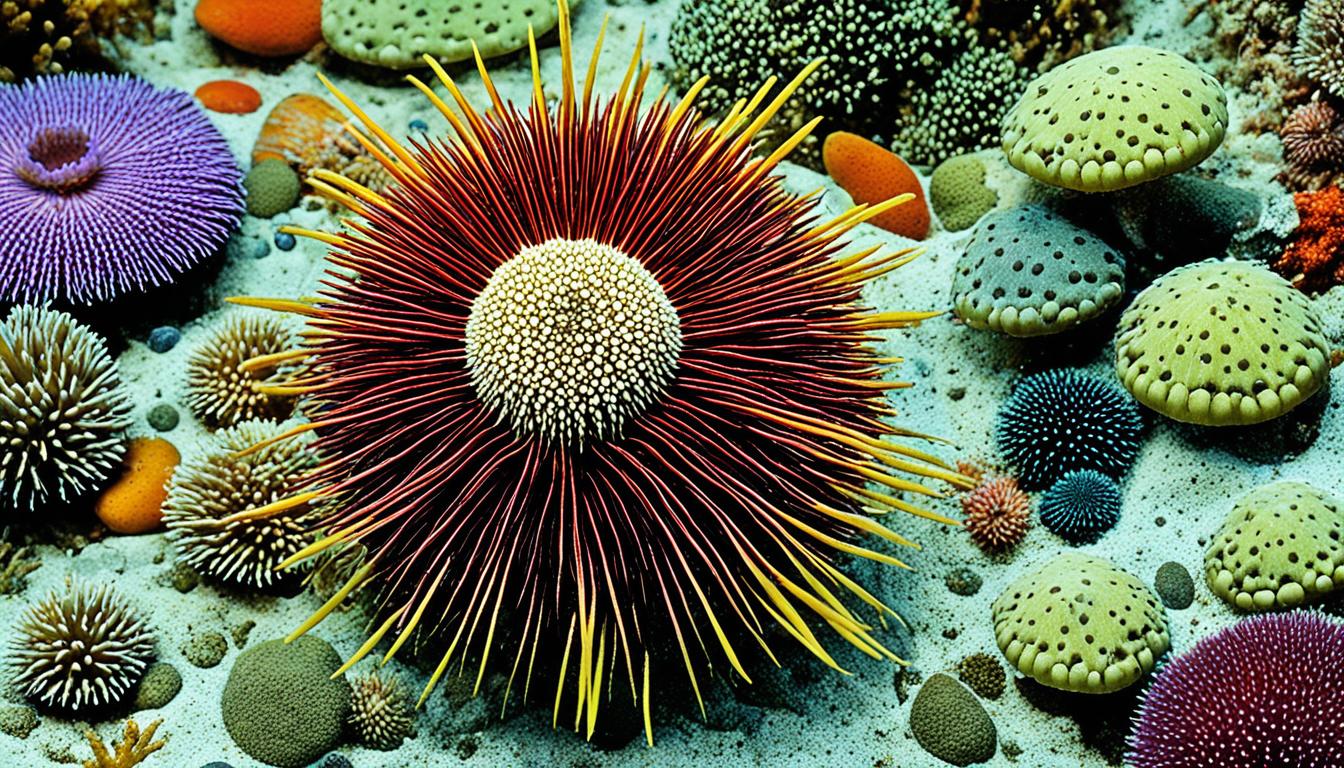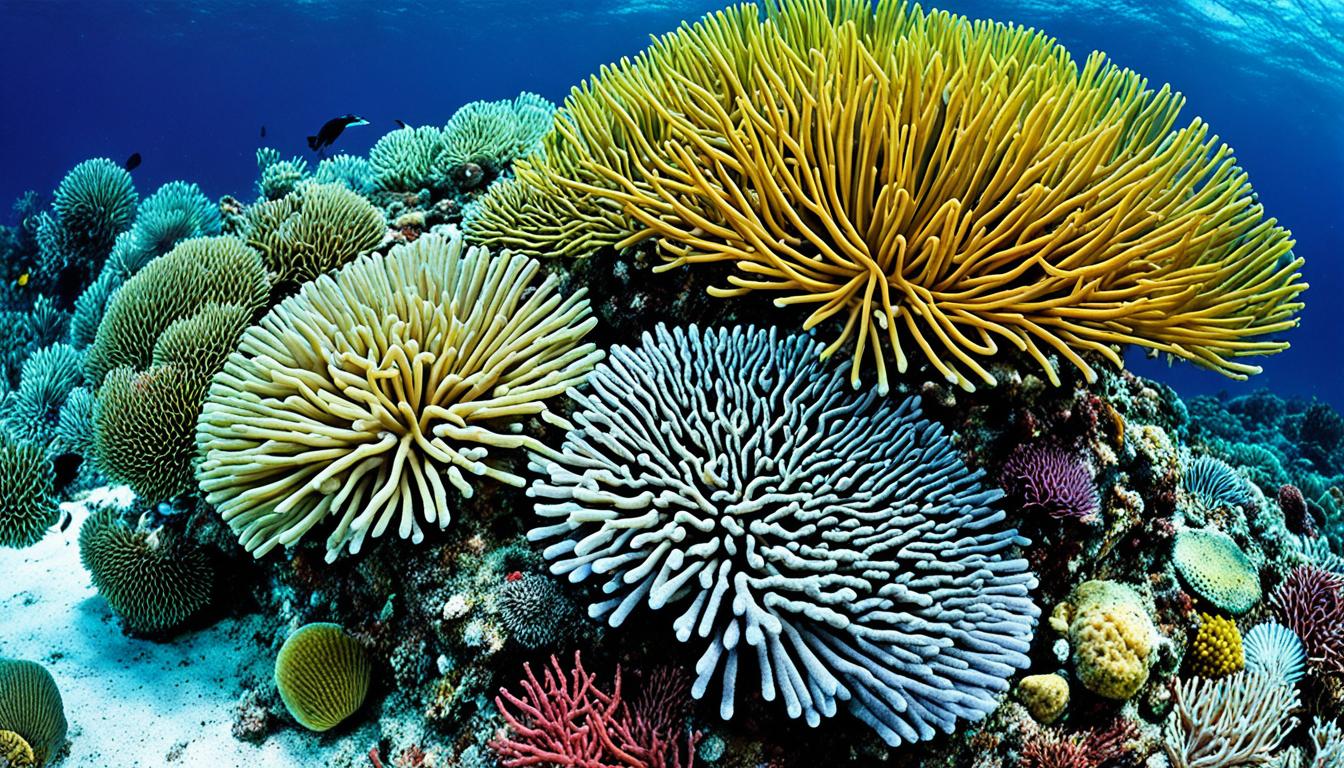Sea otters are fascinating marine mammals crucial to coastal ecosystems. Yet, they face many threats that put their survival at risk. Since the 18th and 19th centuries, they were nearly wiped out by hunting. Now, their numbers are still low, facing threats from habitat loss, overfishing, and climate change.
It’s important to know how humans affect sea otters and support their protection. This will help secure their future.
The Importance of Sea Otters in Coastal Ecosystems
Sea otters play a big role in coastal ecosystems. They are key to keeping these environments healthy. By looking at how they live and interact with their surroundings, we see why we need to protect them.
Keystone Species Role
Sea otters are very important in their ecosystems. They help control the number of sea urchins, which prevents them from eating too much kelp. This keeps kelp forests healthy and full of life.
If sea otters weren’t there, sea urchins would eat all the kelp. This would cause big problems for many other sea creatures. So, sea otters help keep the balance in the ocean.
Impact on Kelp Forests
Kelp forests are very important for the ocean. They are full of life and provide food and shelter for many animals. Sea otters help keep these forests healthy by eating sea urchins.
This helps the kelp grow strong and supports many other sea creatures. So, sea otters are key to keeping the ocean full of life.
Contribution to Carbon Sequestration
Kelp forests also help fight climate change by taking in carbon dioxide. But if sea urchins take over, these forests can’t do their job. This affects the whole planet.
So, protecting sea otters and their homes is crucial. It helps them do their part in fighting climate change. This shows how important it is to look after all the creatures in the ocean.
What threats do sea otters face?
Sea otters face many threats mainly from humans and changes in the environment. It’s important to know these challenges to help protect them.
Human Impacts on Sea Otters
Humans have hurt sea otter numbers in several ways. Pollution from cities and industrial areas makes their homes dangerous. Coastal development destroys their habitats, making it hard for them to survive.
Bad fishing practices also harm them by taking away their food. Oil spills are a big danger, especially in places like California, where the risk is high.
Environmental Changes and Challenges
Climate change adds more problems for sea otters. Warmer oceans cause harmful algal blooms that can kill them. Ocean acidification also hurts their food chain and destroys their homes.
Research shows we need to act fast to protect sea otters from these threats.
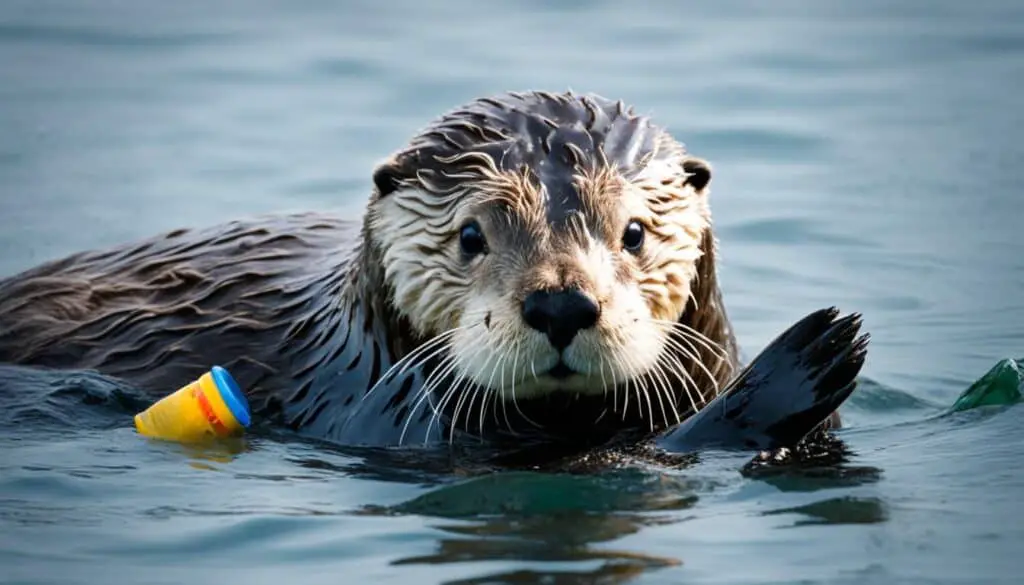
Major Environmental Threats to Sea Otters
Sea otters face many threats that put their survival at risk. Oil spills are a big worry. Climate change also brings risks, causing habitat loss and big changes in their homes.
Oil Spills: A Catastrophic Risk
Oil spills are a huge danger for sea otters. Even one big spill can hurt their communities a lot. It makes their fur useless for keeping warm and takes away their food like sea urchins and crabs.
Climate Change and Habitat Loss
Climate change makes things harder for sea otters by taking away their homes and changing their environment. Warmer oceans lead to bad algal blooms that hurt the water and the food chain. Rising sea levels and more storms also threaten their coastal homes.
As their homes get worse, sea otters have a hard time finding places to live and food. This puts them at risk of not making it.
Predation and Its Effects on Sea Otter Populations
Sea otters face many challenges in the wild due to predation. Sharks and orcas are their main threats. As these predators grow in number, they put more pressure on sea otters. This is especially true in areas where their homes are being destroyed or polluted.
Natural Predators of Sea Otters
Great white sharks and orcas are top predators of sea otters. They cause a lot of deaths, making it hard for sea otters to grow. The number of sharks also depends on the health of the ocean, showing how delicate the balance between predators and prey is.
Shark Attacks and Kelp Forest Decline
Sea otters are facing more shark attacks because kelp forests are disappearing. Kelp forests are key for sea urchins and other food sources. Without them, sharks turn to sea otters for food, showing how connected the ecosystem is.
This situation underlines the need to protect kelp forests and manage shark populations. Doing so is crucial for sea otters to survive in their natural setting.
FAQ
What threats do sea otters face?
Sea otters face many challenges like habitat loss, overfishing, pollution, and climate change effects. Human actions are big reasons for these threats. This has led to a drop in their numbers, making them endangered since 1977.
Why are sea otters considered a keystone species?
Sea otters are key to keeping coastal ecosystems balanced. They eat sea urchins, which helps keep kelp forests healthy. These forests are homes for many marine creatures and help with biodiversity.
How do sea otters contribute to carbon sequestration?
Sea otters help keep kelp forests healthy, which is good for carbon sequestration. Kelp forests take in carbon dioxide from the air. Keeping them safe is key in fighting climate change, showing why we need to protect sea otters.
What human impacts threaten sea otters?
Humans harm sea otters through coastal development, pollution, and bad fishing. These actions destroy their homes and hurt their health and numbers.
How does climate change affect sea otters?
Climate change causes ocean acidification, more algal blooms, and habitat loss, which are bad for sea otters. These changes make it hard for them to survive.
Why are oil spills a significant threat to sea otters?
Oil spills are very dangerous for sea otters. They can kill many, make their food poisonous, and ruin their homes. Oil spills can hurt their survival and recovery for a long time.
What natural predators threaten sea otters?
Sea otters have natural enemies like sharks and orcas. More sharks, especially because of less kelp forests, are a big threat to their survival.
How do shark attacks relate to sea otter populations?
Shark attacks on sea otters are going up because of changes in the ocean. Losing kelp forests changes the balance of who eats who, leading to more sea otters facing their predators.

